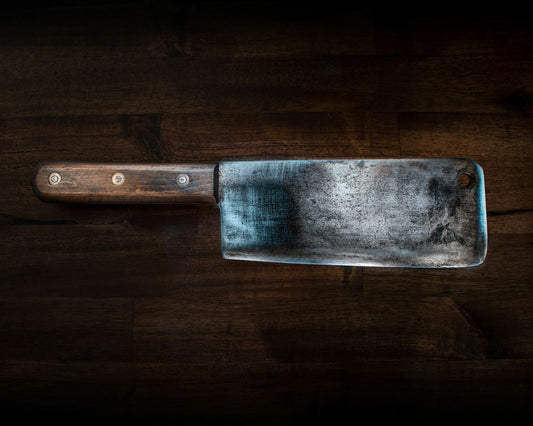White Spots On Cheddar Cheese – What Are They?
Norah ClarkThe white spots on your cheese are crystals that develop because of aging. It is perfectly safe to eat, so don’t waste it, and don’t throw it out!
Quality cheddar cheese is a valuable ingredient. It’s normal that you would be concerned if you saw white spots on the outside and inside of your cheddar cheese.
Read on to find out why the white spots on cheddar cheese are there, what causes them to develop, and how you can determine the difference between mold and cheese crystals.
What Are These White Spots On Cheddar Cheese?
If you’re a lover of cheddar cheese, you might have seen white spots in it at least once. Sometimes, these spots are alarming , as they can create the impression that there’s something wrong with your cheese.
Actually, these white spots are actually cheese crystals that are safe. They develop as a result of the process of aging cheese.
According to cheesemakers and scientists, There are two kinds of cheese crystals: calcium lactate crystals as well as Tyrosine crystals.
Calcium lactate crystals are characterized by pale white streaks or spots in the surface of cheese. They can also form within the paste, i.e. inside the cheese.
Apart from being able to form on cheddar cheese Calcium lactate crystals typically form on parmesan Grana Padano, and gouda cheeses.
Tyrosine crystals are brilliant white cheese crystals. They are typically found in the hard Swiss, Dutch, and Italian cheeses.
In contrast to calcium lactate crystals, which could form on the outer layer of the cheese and inside it, tyrosine crystals generally occur only inside within the cheese.
The texture of tyrosine crystals is more firm and brittle as compared to calcium lactate crystals. Because of their smoother texture calcium lactate crystals typically appear as white smears on cheddar cheese, as well as different hard cheeses.
Why And How Do Cheese Crystals Develop?
To know the process by which cheese crystals form, it is crucial to understand the process of making cheese.
The majority of cheeses, including cheddar, are created using starter cultures. A starter culture is a type of bacteria utilized to convert milk into cheese via fermentation.
The cheese’s age is a sign that the bacteria within it consume more and more lactose, which is the sugar in milk. This results in the levels of lactic acid to increase . This acid bonds with calcium in cheese and forms the calcium lactate crystals.
In the case of tyrosine crystals they develop when amino acids known as Tyrosine break down, and then cluster creating crystals.
It is typical that cheeses have one kind of crystal. In certain instances, there may be calcium lactate and tyrosine crystals within your cheese in the same way.
Are Crystals In Cheese Good or Bad?
If you’re spending much shopping in the aisles of cheese, you might have noticed that a lot of older cheeses are covered with white marks on the surface. This is because certain manufacturers prefer to produce their cheeses with crystals.
Crystals of cheese are believed to be a sign of a high-quality cheese that has been aged well and cheddar made by artisan isn’t an exception.
This is why cheese crystals aren’t an ideal thing to have in industrial cheddar. In this situation, they’re regarded as being a quality flaw.
If you spot streaks of white on the cheddar that you’re using, it could be a good idea buy cheddar from a different manufacturer the next time.
Cheese that has crystal formations inside is safe to consume.
Furthermore, cheese crystals don’t alter the taste of the cheese. Some even enjoy the crunchiness these crystals give to hard cheeses.
How Do You Know If White Spots On Cheddar Is Mold?
The crystals in cheddar don’t make it so that cheddar taste any different. However, the crystals cause the cheddar to loose its appeal.
A lot of people view these spots as a sign of mold or it’s not good. Therefore it is possible to throw out completely excellent cheddar cheese or purchase it at all.
Calcium lactate crystals can be difficult to differentiate from the white mold that could be present on cheese. What can you tell whether the white substance on cheddar actually cheeses the mold or crystals?
Calcium Lactate Vs Mold
The calcium lactate crystals show up like white spots on cheddar cheese as well as inside it they appear quite similar to mold.
Here are some tips to help you determine if there is the cheese is rotting as well as calcium lactate crystals.
- The most common form of mold is on the outside of the cheese. Calcium lactate crystals are visible on the outside of the cheese and within it. Cut the cheese. If you notice white, crunchy spots within the cheese it is very high that the cheese has crystals formed and is completely safe to consume.
- Rub the white spots onto the cheese. Mold has a fuzzy , delicate texture. It is a bit powdery when touched. Calcium lactate crystals feel tough and grittier. They are also crunchy.
- Utilize a knife to find out if the issue is caused by mold or crystals of cheese in the cheese. It is possible to scrape a few of the calcium crystals from the cheese’s surface. Mold however, contrary to what you might think will break down when you come in contact with it with a knife.
- Look closer at the appearance of the cheese’s surface. Calcium lactate crystals appear flat on the surface of the cheese and mold can be slightly raised and fuzzy.
- Examine the hue and color of spots. Calcium lactate crystals always appear white and pale. The color of the mold on cheese can range from green to white. The mold usually appears white when it is first appearing. It can gradually change to green. The cheese may be affected by mold when you see some green spots on the white spots.
Is Moldy Cheddar Safe To Eat?
Molds are utilized to create various types of cheese, which include Roquefort, Gorgonzola, and Stilton. But mold that is not invited on cheese is not recommended.
For semi-soft and hard cheeses, such as cheddar cheese, it’s acceptable to cut off the moldy area and eat the rest the cheese.
This is due to the fact that mold doesn’t get very far into these kinds of cheeses. In the majority of instances, mold doesn’t grow beyond the surface of cheeses that are hard.
However, this isn’t the case with soft cheeses like cottage cheese, cream cheese and the ricotta. The mold can easily infect the entire cheese container. Therefore, simply getting rid of the moldy pieces isn’t enough to eliminate the chance of food poisoning and contamination.
If you see moldy areas on the cheese you’ve crumbled or cut throw it away and do not try to eliminate the pieces that are rotting.
How To Prevent Cheese Crystals On Cheddar Cheese
You now know that cheese crystals aren’t harmful and it’s completely safe to consume cheddar that has white spots. However, you might be wondering whether there’s a way to stop cheese crystals from growing on cheese.
Cheese makers can take specific measures to avoid that cheese crystals form, which typically occurs as a result of a production problem.
Cheesemakers could keep lactate levels in check by washing curd, thereby stopping the formation of calcium lactate crystals. They could also decrease the levels of calcium in cheese.
The tightness of the packaging is another way to avoid from the development of crystals in the cheese on the cheese’s surface.
How Do You Know If Cheddar Cheese Has Gone Bad?
If stored properly, cheddar cheese will last for about one month. The formation of cheese crystals can occur on it earlier , however as you know, cheddar that has cheese crystals on is still great and totally safe for consumption.
However, there are indicators which indicate it’s no longer a good thing and it’s time to eliminate it. We’ve already explained that moldy cheddar cheese could be eaten if you can cut off the affected areas.
Other indicators suggest that cheddar cheese is a bad product and ought to be thrown out.
It is possible to look up the expiration date to determine whether the cheese is acceptable or not. But these dates aren’t always correct and you could throw away a perfectly good cheddar cheese.
And what happens if the cheddar you bought has no expiration date?
Below are some indicators that tell you if your cheddar is bad cheese:
- Color changes. Apart from changing colour due to mould, the cheddar can get darker due to being stored in the refrigerator in a prolonged period. It is recommended to throw out cheddar cheese that is damaged and old.
- Off-putting smell. A slice of good cheddar cheese has an astringent scent that is easily identifiable. If you detect an unpleasant ammonia-like scent, you should throw out the cheese.
- The texture changes. If your cheddar cheese is extremely dry and hard or feels strangely soft and sticky, throw it out. it.
For your cheddar cheese to remain as fresh as it can put it in a tightly wrapped aluminum foil or food wrap or place it in a plastic sealable bag. For the cheddar that is shredded, put the cheese in an airtight bag or container.










